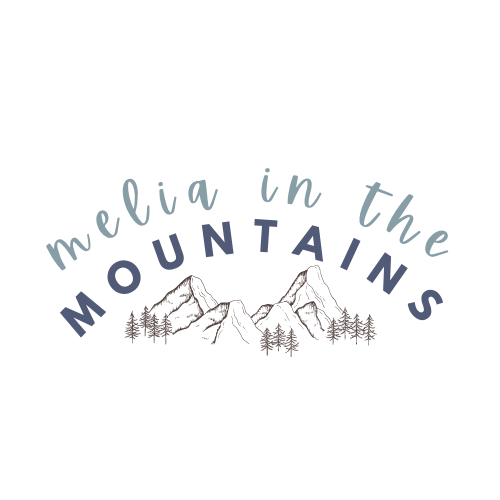How You Can Camp for Free: A Guide to Dispersed Camping
How do you find campsites for free? How do I camp somewhere last minute with no campsite reservation? How do I get real solitude while camping? You’re in the right place!
Welcome to a full guide on dispersed camping!
*This blog may contain affiliate links. If you shop through these links, I’ll earn a small commission at no extra cost to you. Thank you for your support!
What is dispersed camping?
Dispersed camping is camping outside of a designated campground. Dispersed camping means there are no fees or advanced reservations required, but they also don’t have amenities. This means you don’t have access to the same things you would while camping— including toilets, trash cans, and running water. Dispersed campers rely on self-sufficiency, bringing their own water, food, and camping gear. It's a way to escape the crowds, find solitude in the wilderness, and experience the unspoiled beauty of nature. However, it comes with a responsibility to follow Leave No Trace principles, ensuring minimal impact on the environment and respecting local regulations to preserve the pristine landscapes for future generations of outdoor enthusiasts.
Dispersed camping is a great option if you are unable to find a campsite, are looking to save money on your next trip, are hoping to transition from camping to backpacking, or are simply trying to find new places to explore.
Where can I dispersed camp?
When considering dispersed camping options, the first step is getting to know how public lands are categorized.
Different types of wilderness appear to be similar as they are all forms of protected public lands. However, they are managed by different government agencies and have slightly different rules and regulations.
National Forests (@nationalforests) are managed by the Department of Agriculture. National Forests often have dispersed camping along USFS forest roads. These sites are often large pull outs in the roads.
Bureau of Land Management (BLM) (@mypubliclands) also has lots of dispersed camping options. BLM land is managed by the Department of the Interior and offers opportunities for grazing, mining, and recreation. Their website is a great resource.
Sometimes you can find dispersed camping in National Parks, State Parks, and city parks.
Dispersed camping can be found on a decent amount of public lands, as long as it does not conflict with other authorized uses, designated camping areas, or in some way adversely affects wildlife species or natural resources. Make sure to look for signs that say “Camping Allowed in Designated Sites Only.”, “Private Property”, “Closed To Camping”, or “No Camping” as these dictate that the area does not allow dispersed camping.
What do I need to consider while dispersed camping?
While dispersed camping is a great alternative to traditional campsites, there are things you need to consider and some differences in how you should behave.
Before dispersed camping… read up on the principles and guidance of Leave No Trace. These regulations should guide your experience with dispersed camping.
First, remember that dispersed camping sites have no amenities. This means there are no toilets, trashcans, or running water.
Pack out all of your trash.
Follow regulations on burying or carrying out your waste.
Bring plenty of water for drinking and washing.
Second, dispersed campsites are often located off of non-paved roads. These roads can vary in how rough they are, so make sure you’re prepared.
Research the area before you get there (plan ahead).
Carry an emergency car kit.
Fill up on gas before you travel remotely.
Download all your maps and carry paper copies.
Oftentimes these campsites don’t have cell service or have limited service. As such, always make sure someone knows where you’re headed and download and carry paper copies of maps. It’s also a great option to have a GPS/Satellite messenger device like the Garmin Mini to ensure you can get in contact in an emergency.
How do I follow leave no trace guidelines while dispersed camping?:
Before heading out on your trip, read up on Leave No Trace guidelines.
Always do research beforehand and know all rules and regulations of the area
Travel and camp on durable surfaces. This means sticking to the trails and established off-roads.
Camp at least 200 ft away from water sources.
Pack out all your trash.
Dispose of your waste properly by digging a 6-inch cat hole or using a wag bag.
Follow all fire regulations, including getting a permit if required. Put out your campfires properly and only use established fire rings.
Store all your food properly to prevent local wildlife from getting into it.
Please note— if you’re camping in bear country, it’s safest for you and the bears to put all your food and scented items in a bear canister or bear box outside of your car.
What resources are there to help me find free campsites?
For National Forests, it’s also extremely helpful to have a hard copy map of the national forest you’d like to camp in. These are difficult to find online, but you should be able to pick them up at local gas stations, grocery stores, and ranger stations once you reach your destination.
The Dyrt: @thedyrt
Campendium: @campendium
The iOverlander app @ioverlander
Free Campsites: www.freecampsites.net
Ultimate Campgrounds app
What gear do I need for dispersed camping?
Other blogs you might like!
Let’s Be Friends! Connect with me on Instagram!










